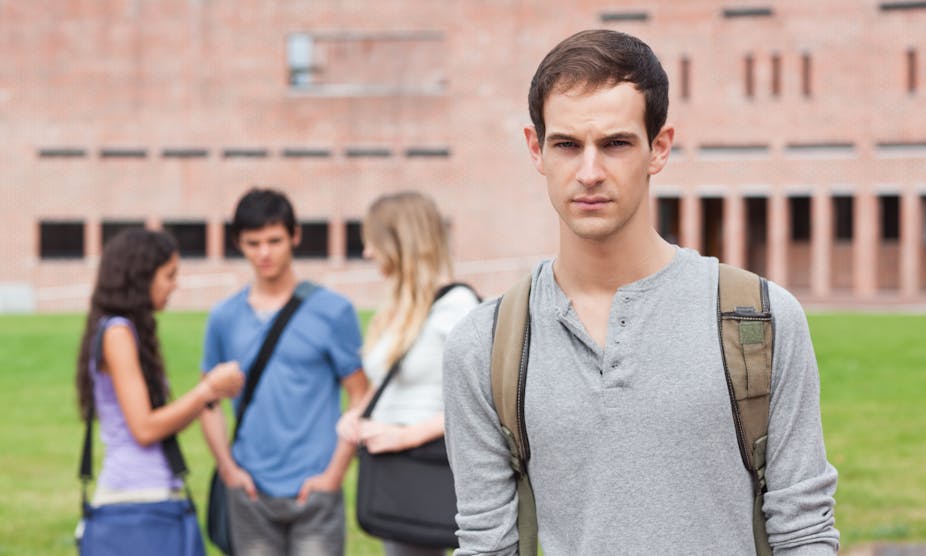According to the Federal Government, Australian public universities need to be more inclusive, particularly when it comes to enrolling poorer students.
They’ve set a target to have 20% of undergraduate students enrolled in our universities from low socio-economic status (SES) backgrounds by the year 2020. There’s much to be said about the goal and its effects for universities and students. But first, let’s look at how our institutions are doing.
Moral and practical
The government’s target contains both moral and pragmatic elements. Morally, any public education system that benefits wealthier students more than others is, arguably, unfair. But pragmatically, there is a positive link between education and improved health and economic outcomes. There is also evidence a good education reduces negative outcomes such as crime.
In other words, the benefit of a university education goes not only to the individual, but society at large.
Since the higher education expansion under the Dawkins revolution, low-SES enrolments in Australian public universities have averaged around 15%.
In a perfect world (at least, mathematically), it would be 25%, in order to match the percentage of low-SES students in the general population.
A numbers game
The most recent figures show that in 2011, 15.7% of students in our public universities were low-SES. This is up from 15.0% in 2008, when the policy pressure started.
On the one hand, it’s a very small increase. On the other hand, it’s the highest it has ever been.
Currently, only 13 out of 37 public universities are above the 20% target (Batchelor Institute has been excluded from this analysis, because its small size skews the data). Central Queensland University tops the list at 45.4% and the Australian National University is at the other end with only 4.0%.
Over the last four years, the most significant improvement has come from Charles Darwin University, which has increased its percentage of low-SES enrolments from 12.6% to 17.8%. The University of Sydney has done the worst, going backwards by 0.3%.
However, most of the heavy lifting of low-SES enrolments continues to be done by regional universities. The more elite universities remain as inaccessible as they have always been. Low-SES enrolments in the Group of Eight (Go8) universities averaged 8.7% in 2011. This was actually worse than in 2007, when Julia Gillard (then the Minister for Education) started talking about a review.
Increasing low-SES enrolments
Admission into undergraduate courses is highly competitive, so universities need to have specific strategies to increase low-SES student enrolments. Broadly speaking, there are three approaches. The first, and most effective, would be to provide a quota for disadvantaged students but universities could see this as compromising entry standards.
A second option is to use use compensatory scaling. For example, the University of Sydney has its Broadway Scheme, which allows applicants to compete for admission with an ATAR of up to five rank points below the course cut-off or equivalent if applicants can demonstrate “long-term educational disadvantage”. But the performance of universities using this method suggests that either poor students do not qualify for the schemes, or if they do, then the compensation provided is still insufficient.
Finally, universities could consider each claim on a case-by-case basis. In fact many universities already do this but the process is naturally highly subjective and, based on the current data, does not appear to be working.
Is there a better way?
Education expert, Gavin Moodie has observed that universities are quick to point out that educational inequality happens well before they get involved, but are less quick to be part of the solution.
One way for universities - particularly the elite ones - to make a difference is to start working with disadvantaged students and their parents at a much younger age. Above all, this will help nurture their aspirations to go to university.
In the meantime, universities will continue to be driven by more direct measures, most notably money. Since 2010, low-SES student enrolments have attracted a loading the government pays the university to support students.
However, the evidence to date suggests that the extra money is not encouraging significant change. And in the current economic climate, the government will find it harder to continue to provide (let alone increase) the financial incentive.
A market mechanism
Instead of providing additional money, the government could redirect the current funding via a market mechanism, much like its fixed-price carbon trading scheme. This would allow the government to set a more realistic (i.e. higher) price to support each low-SES student enrolled without necessarily having to increase funding.
Essentially, those universities under the 20% target would have to “buy” students (virtually speaking) from those above it.
In the short term, this would mean those universities doing the right thing will be significantly rewarded, at the expense of those who are not. And in the longer term - if the cost of trading students is sufficiently high - universities might just find it cheaper to nurture disadvantaged students themselves.
This could help us avoid an Orwellian future in which all Australian universities were inclusive… just some more inclusive than others.

